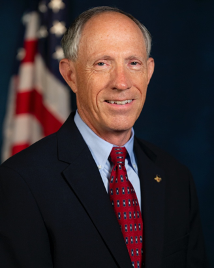The National Transportation Safety Board’s Vice Chairman Bruce Landsberg was designated Friday to continue to serve in the position for a new term of three years.

NTSB Photo by James Anderson
President Donald Trump designated Landsberg as the Board’s Vice Chairman Friday. Landsberg began a five-year appointment as a NTSB board member Aug. 7, 2018, and on that same day began a two-year term as the NTSB’s Vice Chairman.
“It’s been a privilege to work with staff, fellow Board members, and the public to improve our national transportation system,” said Landsberg. “Unfortunately, there is no shortage of safety opportunities and we’ll be looking at ways to apply some of the systemic approaches that have been used so successfully in aviation to some of the other modes. We’re working toward the goal of zero deaths in transportation, and until we can achieve that goal, we’re working to reduce the number of deaths and injuries that happen every year in every mode of transportation.”
“Bruce brings a wealth of experience to the NTSB with his extensive general aviation safety background,” said NTSB Chairman Robert Sumwalt. “While serving as vice chairman during the past two years, Bruce has provided great assistance to me in my role as chairman. I’m delighted that President Trump has allowed him to continue in that capacity for another three years.”
Landsberg, who has more than 7,000 hours piloting aircraft, holds an Airline Transport Pilot certificate with instructor ratings for airplane single and multi-engine land, instruments and advanced instrument/ground instructor certificates. A graduate of the University of Maryland with both bachelor’s and master’s degrees, Landsberg also served in the U.S. Air Force.
The term of the NTSB’s Chairman and Vice Chairman was extended from two-years to three-years by Congress in the NTSB’s October 2018 reauthorization. Among Landsberg’s priorities from his new term as Vice Chairman, he wants to see implementation of safety recommendations related to:
- Reducing distraction and speeding related highway crashes, reliable automation in vehicles, and automated enforcement on highways.
- Improved weather forecasts and reduction of weather-related aviation crashes through practical and widespread inflight weather reporting by pilots
- A user-friendly Notices to Airmen System.


